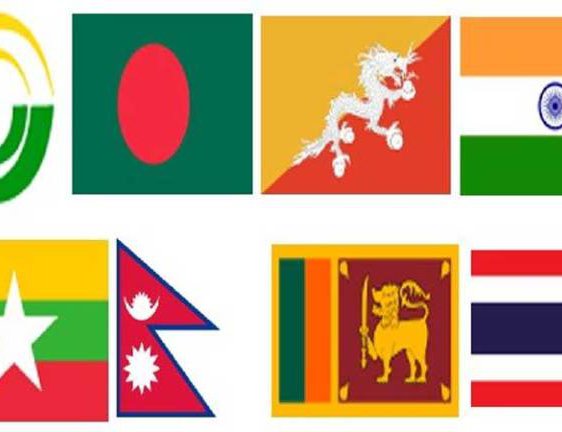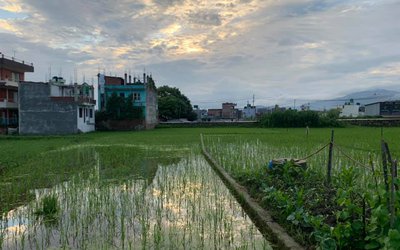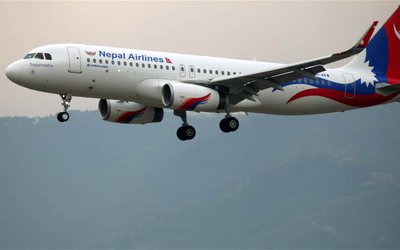
Southeast Asian nations have achieved great prosperity within the last few decades, through an outward-looking economic strategy and intra-regional integration under the ASEAN, with member countries participating in the regional production network. However, the neighboring South Asia stagnated due to its inward-looking growth strategy, and the lack of infrastructure which results in low trade integration and regional connectivity within the region and beyond.
India's 'Look East' policy, which was formulated and implemented since 1992, is probably among early attempts made by a South Asian economy to integrate itself beyond the region. In 1996, Thailand responded with its own 'Look West' policy, formulated for mutual benefit through co-operation in trade and investment, science and technology, agriculture, tourism and education. Under the incumbent Prime Minister Shree Narendra Modi, India has taken a decisive step in the direction with an 'Act East' policy.
Currently, India, Nepal, Bhutan, Bangladesh, Sri-Lanka, Myanmar and Thailand are cooperating multilaterally through BIMSTEC platform. It aims to increase trade and connectivity between South Asia with South East Asia, particularly by integrating India's North Eastern region, Bangladesh, Nepal and Bhutan with neighboring East Asian markets.
If we go back about seven decades in history, South Asia had one of the most developed transport networks in the region. Until the end of the British Raj, the sub-continent trade thrived on the extensive network of highways, waterways and the railway links. But, after the geo-political changes in the region, there was a gradual disruption of this connectivity throughout the second half of the last century. Today, the highways, waterways and the railway links stop at the national border, dividing the region with high walls and fences even in absence of natural barriers. National security and domestic foreign policies dictate, relegating the issues of cross-border socio-cultural linkages and, traditional economic and trade relationship among the markets of people across the fences. As a result, South Asia today is one of the most underdeveloped corners of the globe, a home to the largest population living below the poverty line.
There is lot to gain from mutual cooperation and integration of economies in this region. The free flow of goods, services, labor, knowledge and capital within the BIMSTEC countries can dramatically reduce costs of factors of production, minimizing risks and challenges often faced by big businesses in the region. The collective market can enhance competition, innovation and build complementary trade relations among the nations. The rising middle class population, one of the biggest in the world, offers a lucrative market that could reduce external shocks due to instability in the global market.
The interdependence among BIMSTEC countries have been increasing, especially between India and Bangladesh, India and Nepal, India and Bhutan, Bangladesh and Myanmar and Myanmar and Thailand. There exists a complementary relationship between these countries in energy, trade, investment and market access.
Over the last decade, the hungry Bangladeshi economy has been growing at a stable rate of 6 per cent. Naturally, the surge in the FDI leading to rapid expansion of manufacturing sector has created an energy deficit in the country, and the demand for power will only increase in the coming years. These industries employ hundreds of thousands skilled, semi-skilled as well as unskilled labor, who have together formed a backbone of Bangladesh's new economic prowess. The unemployment rate has remained at a relatively stable rate over the last decade, bringing macro-economic and political stability.
Therefore, Ministry of Power, Energy and Mineral Resources of Bangladesh has been seriously considering energy imports from the neighborhood to keep its economic engine running. It has recently signed Power Trade Agreement (PTA) with Nepal to import renewable energy. Bangladesh has proposed to invest USD 1 billion in Nepal's hydropower sector to import thus produced electricity for its own consumption. Nepali side has welcomed this proposal as the existing hydropower generation potential in the country is much more than Nepal's consumption capacity and will need an international market. But that alone is not sufficient. A successful trans-boundary energy trade requires convergence of energy policies among neighboring countries. This means, countries that host trans-boundary energy transmission infrastructure must set aside their narrow diplomatic pursuits and political differences, and work closely to help develop necessary infrastructures for the connectivity.
Bangladesh and Nepal do not share common international border, and will therefore need to use transmission system of India to trade electricity with each other. During Bangladesh’s Prime Minister Sheikh Hasina’s visit to India in April 2017, the latter expressed its commitment to play facilitative role in transferring electricity from Nepal to Bangladesh. This commitment by New Delhi would also be in consistence to Framework Agreement for Energy Cooperation signed by SAARC member countries, including India, during the Kathmandu Summit in 2014. The framework agreement requires member countries to guarantee non-discriminatory transmission access for cross-border electricity trading among other member states. Bangladesh is already keen to import electricity which will be generated from the under construction Upper Karnali Hydroelectricity Project (900 MW) which is being developed by India's GMR company. Both, Bangladesh and Nepal are establishing power trading companies in their respective countries to facilitate energy trade in the near future.
The convergence of economic policies of Bangladesh, Nepal and India, especially in the areas of energy, trade, transportation and communication could unleash immense potential to integrate the sub-region for mutual benefits. In this regard, the growing economic interdependence between India and Bangladesh could act as a fulcrum, possibly for entire BIMSTEC region, bringing prosperity and peace to people living in this block by harnessing human and natural resources.
For India, a well-developed energy market in Nepal also offers an opportunity to expand its manufacturing sector, shifting the industries that consume large amount of electricity and water into Nepal's government hosted Special Economic Zones (SEZs). Thousands of skilled, semi-skilled and unskilled Nepali men and women, migrating to Malaysia, Qatar, Saudi Arabia, UAE and other countries, could instead prove an attractive and competitive workforce for Indian industries in Nepal.
For Nepal, the money earned from energy trade as well as hosting Indian industries will not only help to bring down trade deficit and improve balance of payments, but also increase its stagnant growth and create new jobs in the economy, which will help to reverse migration of the manpower.
The energy cooperation between the two countries will help India in meeting its demand during the peak hours in the summer, when the melting snow-fed rivers of Nepal offer peak energy generation potential. By promoting its energy consumption in favor of renewable sources, India will reduce dependence on thermal and nuclear power plants. This will significantly reduce India's carbon foot-print, contributing to fulfilling its international commitments on Nationally Determined Contributions (NDCs), including Paris Accord.
Bangladesh already imports 600 MW of electricity from India and is looking to up that figure to 1000 MW in the coming years. There is also a plan to build an oil and gas pipeline between the two countries that will further boost mutual cooperation between two emerging economies. Additionally, there is a plan to set up a pipeline from Numaligarh refinery in Assam, which will boost supply of diesel into Bangladesh.
Meanwhile, there is also an ambitious plan to lay 6900 km pipeline that will bring in Myanmar’s natural gas into India and Bangladesh. The project promises to bring mutual benefits to all three countries. In the long-run, the project will spurt new discoveries of natural gas reserves in Myanmar, since the limited natural gas reserves in Shwe region is not sufficient to sustain long-term supply. This is because, the gas reserves in Shwe region is already being extracted to supply to China under their bilateral trade agreement.
Similarly, land transport is another important factor in accelerating deeper economic cooperation among Nepal, Bhutan, India and Bangladesh with Myanmar and rest of South-East Asia, as it reduces the cost of international movement of both goods and passengers. The concept of Asian Highway and Trans-Asian Railways, connecting Bangladesh, China, India and Myanmar could be crucial for mutual economic benefits in this region. The huge expansion of roadways and railway networks in India and Bangladesh already offers basic infrastructures for establishing an intra and inter-regional transport connectivity. The recent announcement by Prime Ministers of India and Nepal to build railway links from Raxaul to Kathmandu will only contribute to expanding this connectivity. Additionally, there was an agreement to open up inland waterways between India and Nepal, which will give the latter additional access to sea that will boost up trade and investment. Once Nepal is connected to Bangladesh and South-East through these means of transportation, it will open a new market for both Nepal and other BIMSTEC countries. There will be greater flow of goods and services within the region, particularly inflow of Buddhist tourists from Myanmar, Thailand, Laos, Cambodia, Vietnam and other countries into Nepal. Additionally, Nepal will benefit from greater possibility of foreign investment, which is much needed for kick-starting stagnant growth and creating jobs in the country which has suffered from a decade of violent conflict and another decade of political instability.
It is indeed a pity that this potential has largely been untapped and the land connectivity within BIMSTEC region remains fragmented. Changing the mindset of political leadership in respective countries, to support the strengthening of transport linkages for smooth movement of people, goods and services across the BIMSTEC region will be fundamental to unleashing the immense potential that we, as a region hold. It is a good news that the present Indian government has pushed 'Act East' Policy which will contribute to this vision and goal. The trilateral highway, which is under construction and connects India-Myanmar-Thailand is expected to be completed by 2019. It will boost trade, commerce, and tourism ties of South Asia with South East and East Asia. The highway will also be crucial for the development of India's North Eastern states, which strategically borders countries like China, Nepal, Bhutan, Bangladesh and Myanmar- but has largely remained isolated from India's development mainframe.
The Jamuna Multi-purpose bridge, also known as Bangobandhu bridge, which was constructed in 1998, is located strategically on the Asian Highway and Trans-Asian Railways, which when fully developed could connect Bangladesh, India and Pakistan, with South East Asia in the East and with Central Asia, West Asia and Europe towards the west. The bridge could also offer an additional viable access to sea for Nepal and Bhutan, through a land route to the port of Chittagong. It will reduce increasing pressure in Kolkata port.
India has denied transit facilities to Nepal and Bhutan for sending their goods overseas through Bangladesh, and Bangladesh has also denied transit access for efficient movement goods to and from India's North-East. If these barriers are removed, it would enable India, Bangladesh and the all the BIMSTEC countries to trade goods across the region at much lower costs. India will be able to cater to its North Eastern population more efficiently, while Bangladesh could benefit from substantial freight and port charges from Chittagong and Mongla ports. This integration of the transport network alone could increase intra-BIMSTEC trade by several times!
Similarly, Western Myanmar, which has a border with Bangladesh, is separated from the rest of Myanmar by the Arakan Mountain range. The hinterland of the Chittagong port could be stretched up to the foot of the Arakan Yoma. The road will help to reestablish the historic link between Ghumdhum on the Bangladesh side and Tumbro on the Myanmar side. This traditional trade route, could then eventually be connected with the Asian Highway (AH) that links upto Southeast Asia. And finally, the proposed bridge over the Palk Strait between Talaimenhar in Sri Lanka and Dhanuskodi in Tamil Nadu will complete the connection of the BIMSTEC region.
The deeper integration between South and Southeast Asian economies through BIMSTEC will make them depend more on their own markets for trade and growth. There will be increased intra-regional trade within South Asia and South-East Asia as well as boosted inter-regional trade between the two. Collectively, the participating economies will benefit from induced trade and reduced dependence on distant markets, cushioning them from the external shocks of global economy. The existence of complementarities in the production and exports of goods and services between the two regions also holds the potential for a win-win cooperation.
But, in this integration of the BIMSTEC countries, India's North East region will become a gateway to other South Asian economies such as Nepal and Bhutan. Similarly, Bangladesh can become a hub around which reconstruction of land links connecting transport infrastructure of the eastern region of South Asia will be realized. Bangladesh once had a major highway linking central India with both north Bengal and north-east India. The revival of this historic trade route would provide north-east India access to the sea through the Bay of Bengal and integrate its market with Bangladesh, making this less-developed region an important trade link within South Asia and beyond. The Chittagong port could be built up as the nodal point for handling the region’s trade.
If and when realized, this vision of integration among BIMSTEC countries will produce great benefits for all participating nations, boost our collective economy, and create a single largest market in the world. And this is completely doable, with just a little political will on all sides. For much of the last century, nations and governments in this region have engaged in a diplomacy that was driven by a military security interests. This has come at a great human cost: poverty and lost opportunity for development. We must all work to change this, and ensure our respective governments engage in a diplomacy that centers around human security, through greater trade and economic integration in the BIMSTEC region.
















